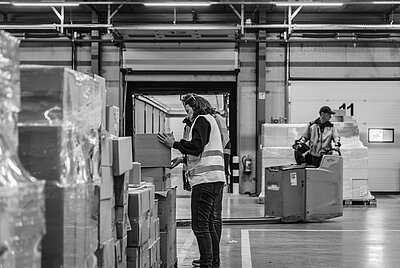Make mobile commerce a priority
M-commerce isn’t just about creating your own App or investing in all sorts of smart technology. Getting back to basics is also still an incredibly important step to make sure you’re prioritising it.
A staggering 68.8% percent of online transactions are abandoned once they reach the shopping cart – with many people citing usability problems with the website as the reason. Making sure that your website is mobile- and user-friendly is incredibly important. A responsive design, that adapts to various screen sizes, means you can provide an enjoyable shopping experience, which is more likely to lead to completed sales.
It's also worth paying attention to your payment platforms and digital wallets, like Apple Pay, Google Wallet, and Samsung Pay. Consumers are looking for easy and secure payment methods via their mobile phone, whether that’s paying for goods online or using their phone to pay when they’re in-store. Offering plenty of convenient, mobile-friendly payment methods significantly enhances your customers’ shopping experience, encouraging more of them to complete their purchases.
Embrace the opportunities of mobile commerce
If being a little bolder is on your radar for 2024, creating an App is a smart sales move. It allows you to incorporate functionality like product recommendations, exclusive App-only discounts, and faster checkout processes which all increase the chances of a purchase being made – by 33%.
IKEA is taking things one step further and embedding Augmented Reality within its Places App which allows customers to visualise how furniture would look in their homes before they commit to purchasing. Alongside helping to make a sale, it can also help with reducing returns because customers are more confident about their choices before purchasing.
If you’re creating an App, it’s wise to consider using push notifications so that you can notify your customers of new arrivals, flash sales, and offers. And if you’re wondering if it’s worth it, push notifications have a staggering open rate of 90%. It’s one of the most effective ways to deliver sales messages to your customers.
Another way to add value to Apps is to use them to link up any loyalty programmes you have. Every time a customer purchases through the App, you can reward them with points that can be redeemed however you decide, helping to foster loyalty with customers and encourage them to make repeat purchases.
Learn from leaders
There are plenty of European retailers that are doing great things with m-commerce, giving you opportunities to learn and test to find the right approach for your brand.
German-based fashion retailer, Zalando, uses its mobile App to offer personalised shopping experiences. It gives customers tailored recommendations based on their behaviour and preferences. It also uses highly effective push notifications for its sales, new arrivals, and special offers, giving customers relevant content and opportunities.
In the UK, ASOS has a feature-rich app, with a visual search functionality where customers can upload photos of clothing they like, and the app finds them similar items available on ASOS. This is a fantastic way to get their customers to find new items in styles they already know and love. There’s comfort in familiarity for shoppers and ASOS has found a way to capitalise on it.
French multinational retailer, Carrefour, uses its Carrefour App to let customers create shopping lists, access their digital coupons, and even scan products for detailed information while shopping in-store. The App also supports mobile payments, making the checkout process faster and easier.
M-commerce is one of the fastest growing trends in retail in 2024. Taking time to see where you can embed it within your own retail journey is likely to result in big rewards in customer loyalty and spending.
Partner with a team that’s ready to support your m-commerce journey. Speak to our team on +31 (0) 88 494 20 80 or email us at online@worldpack.eu.


